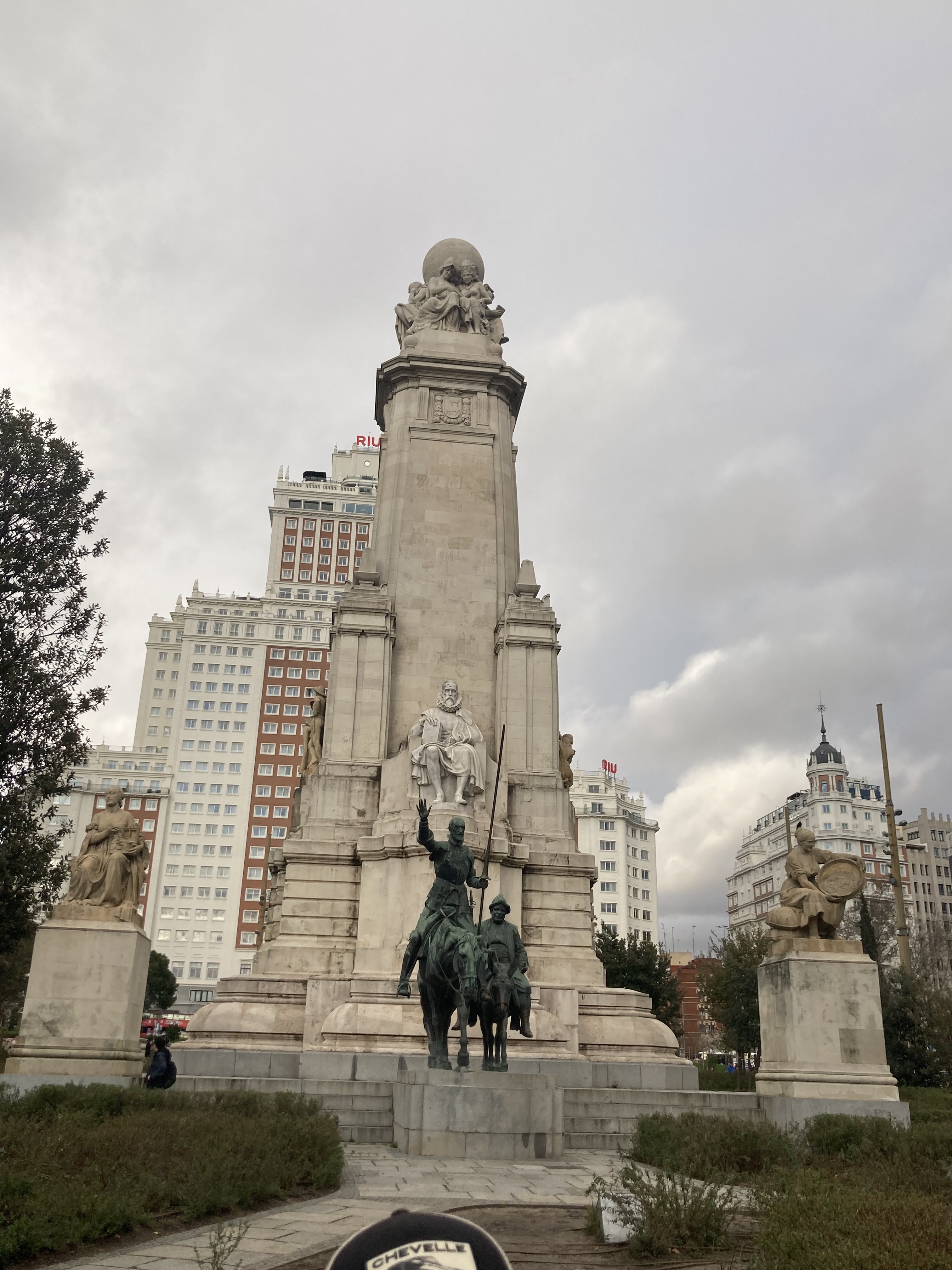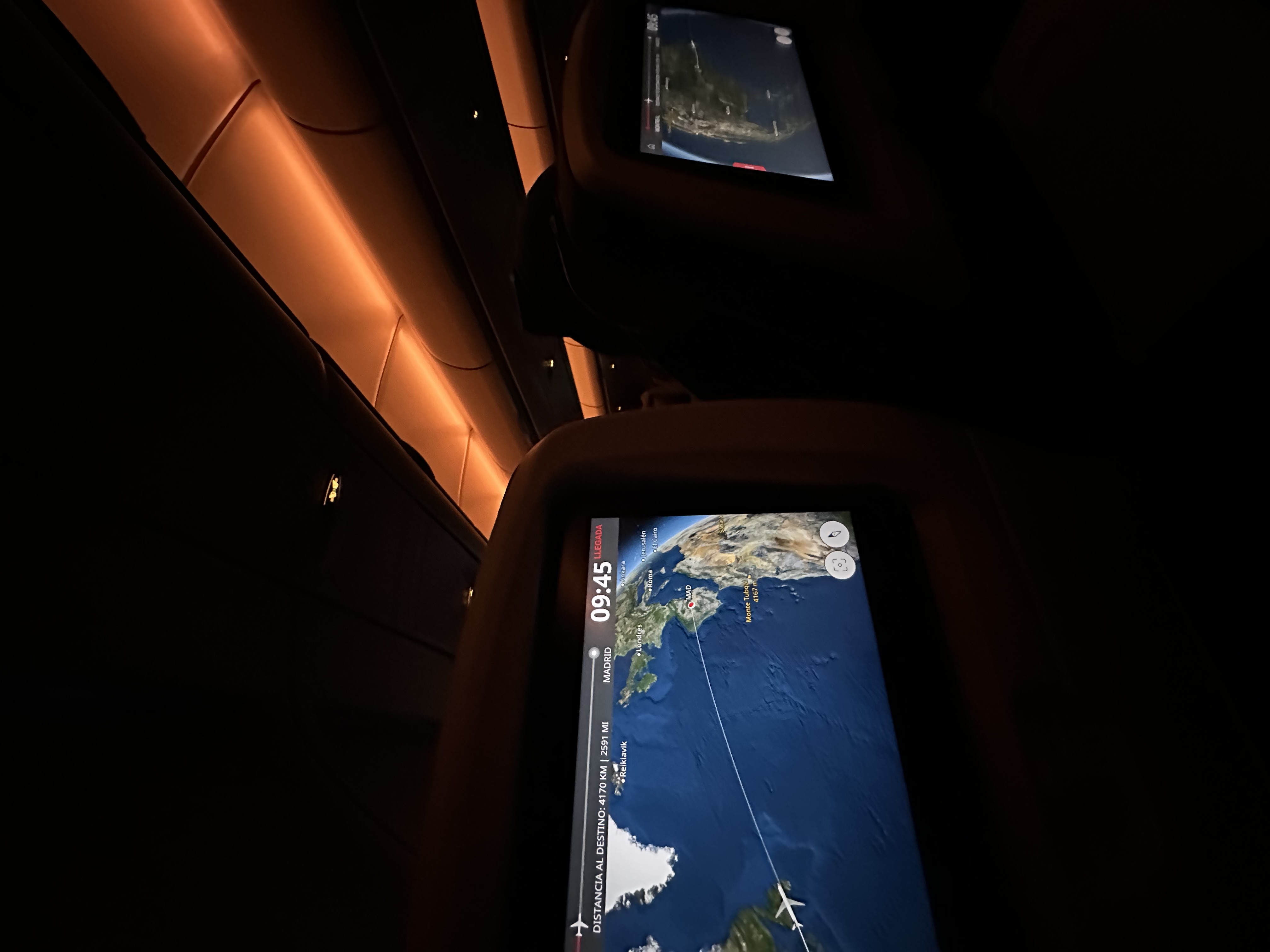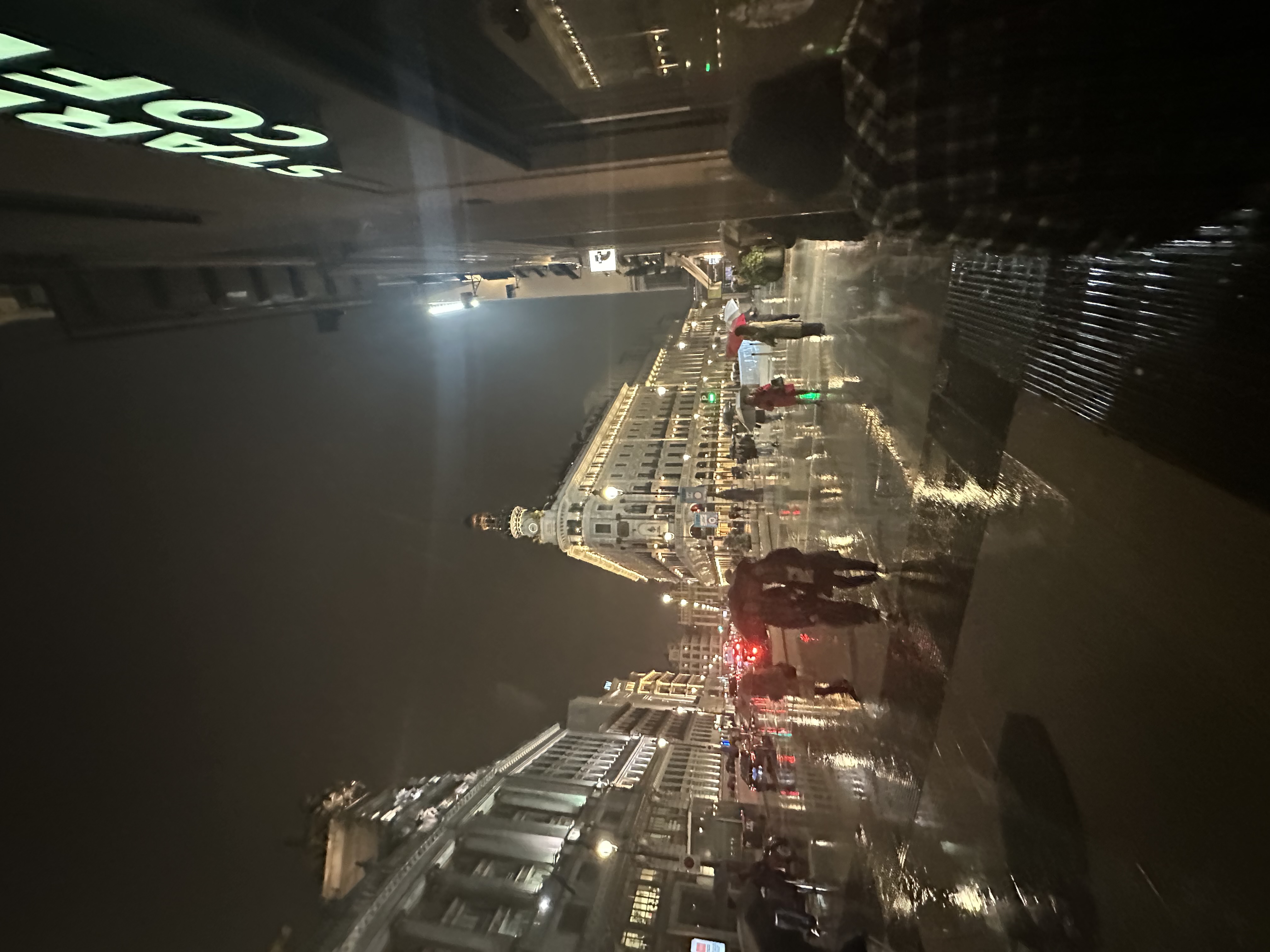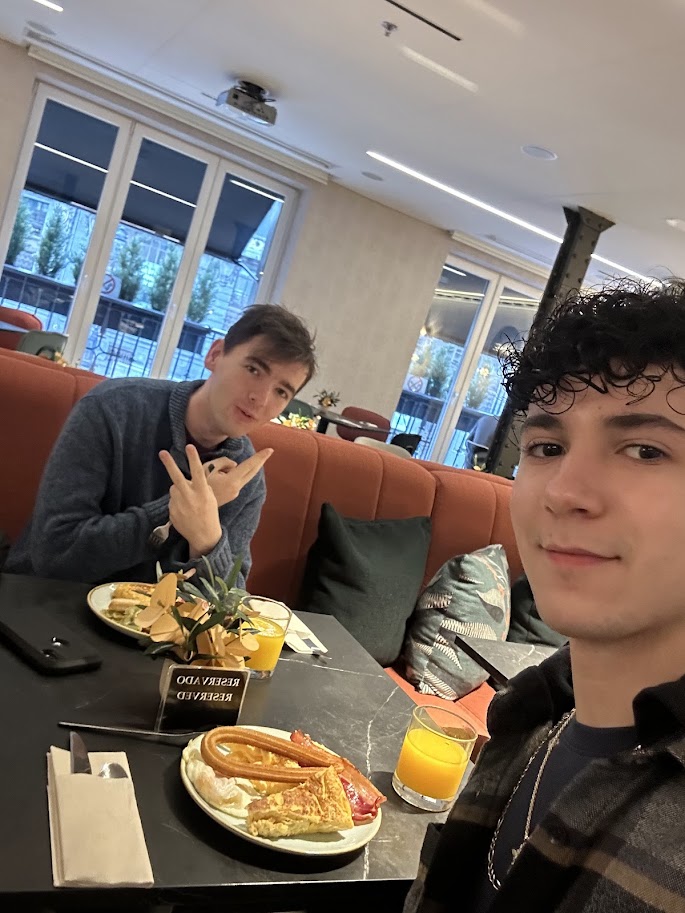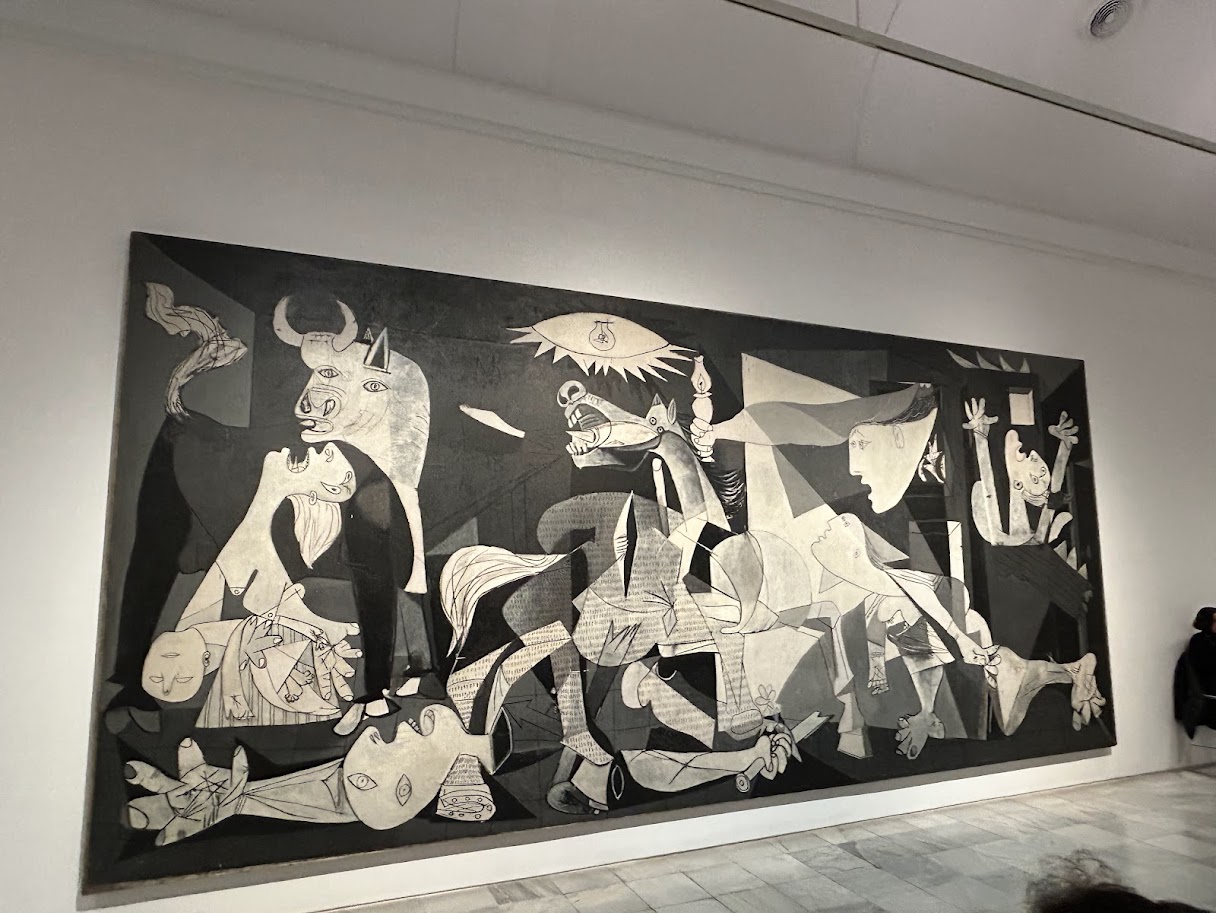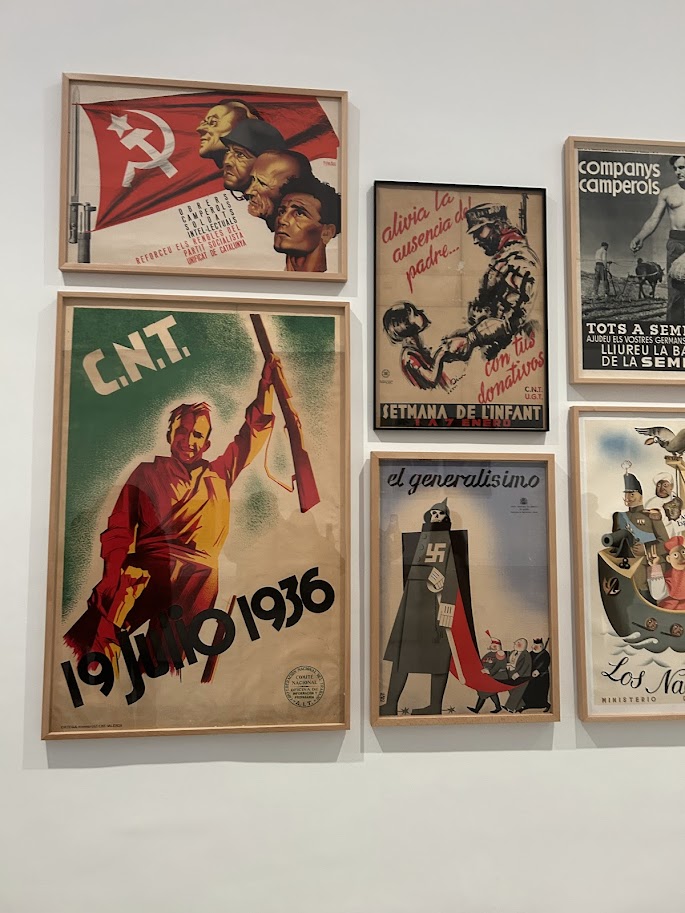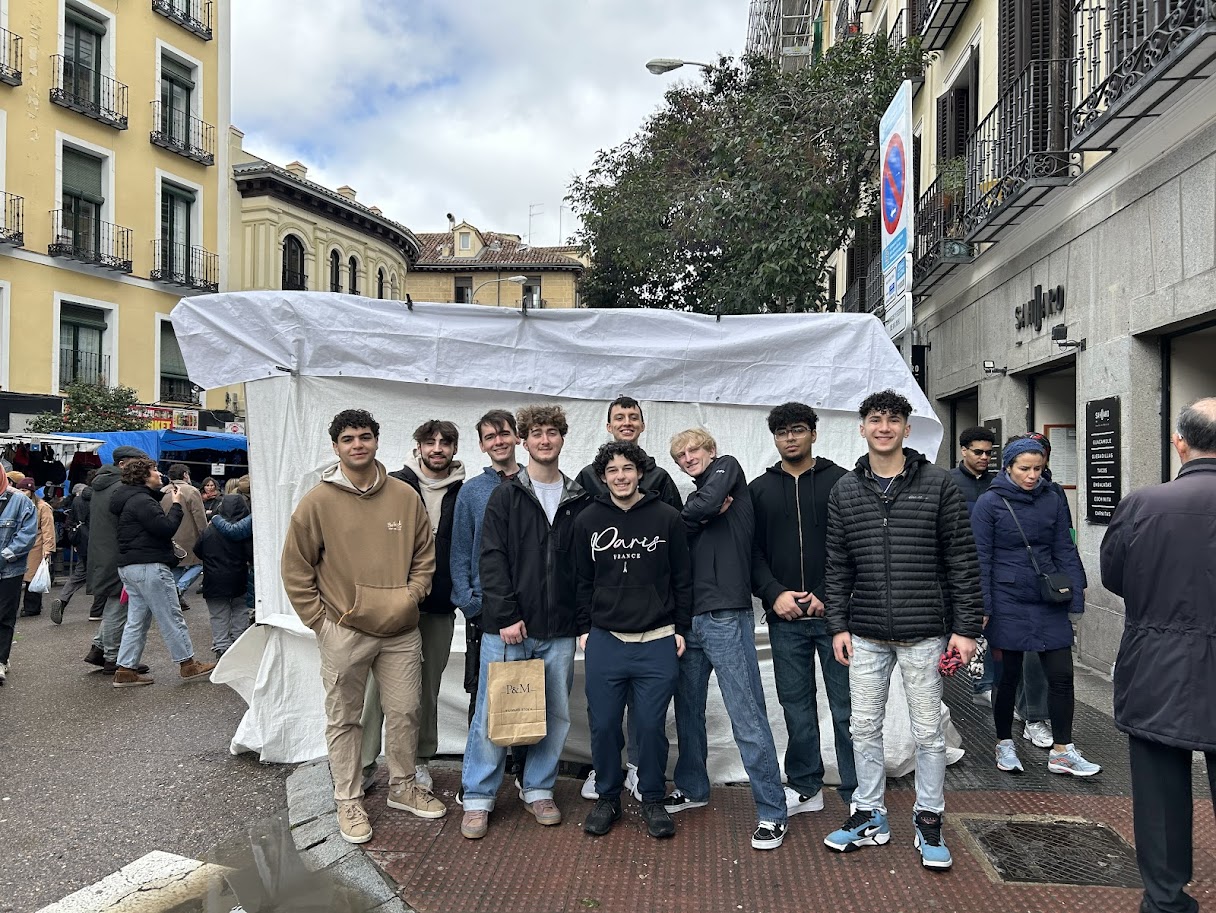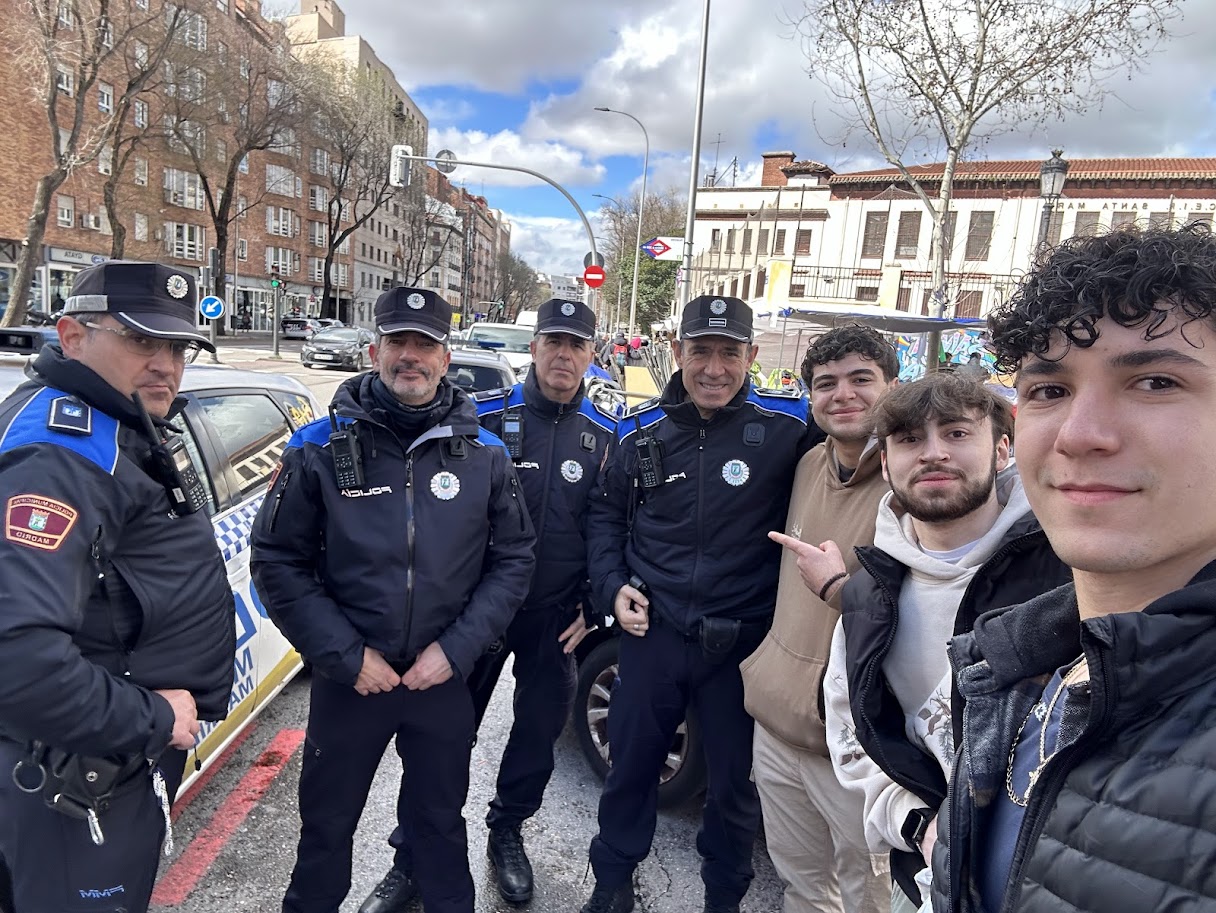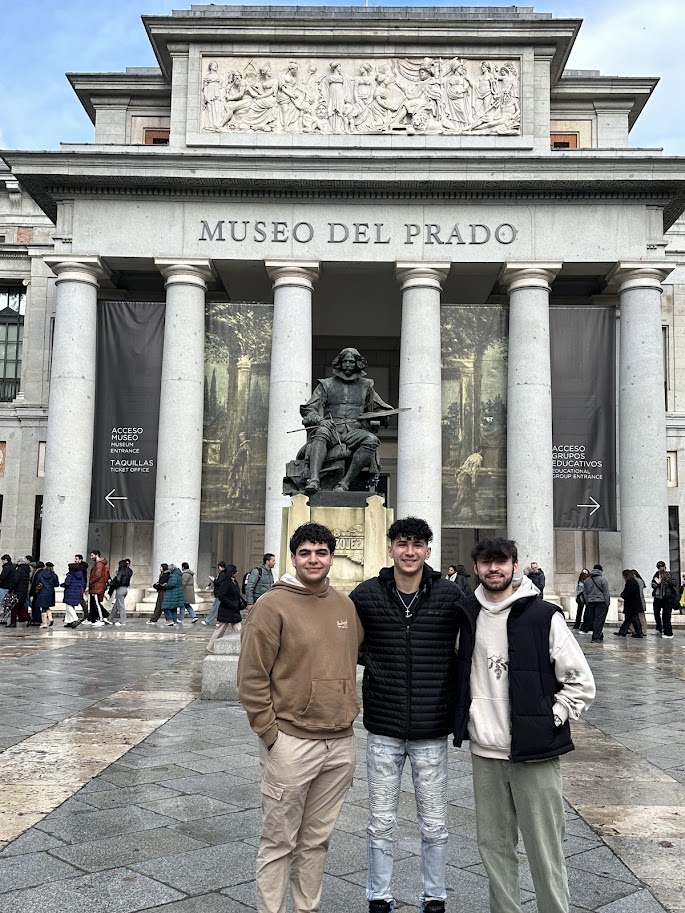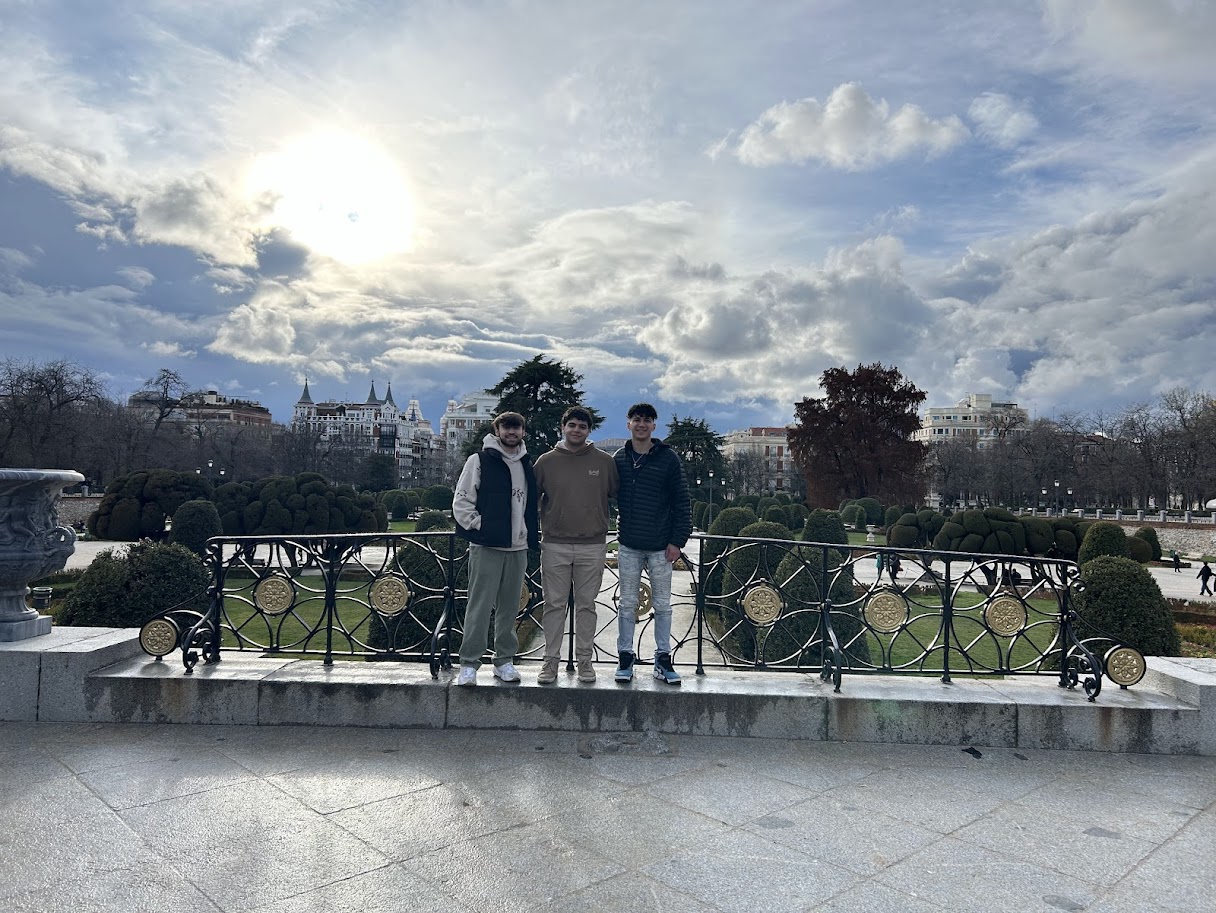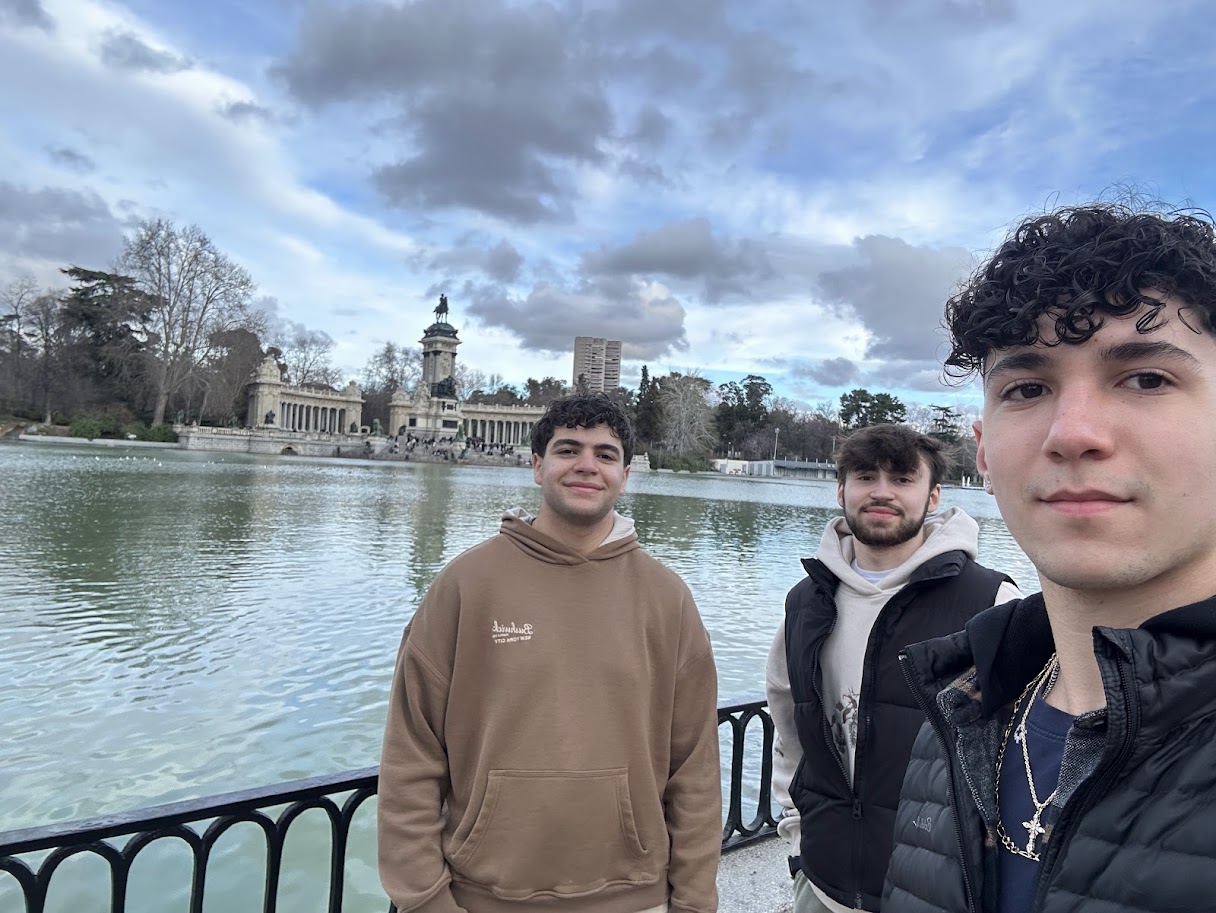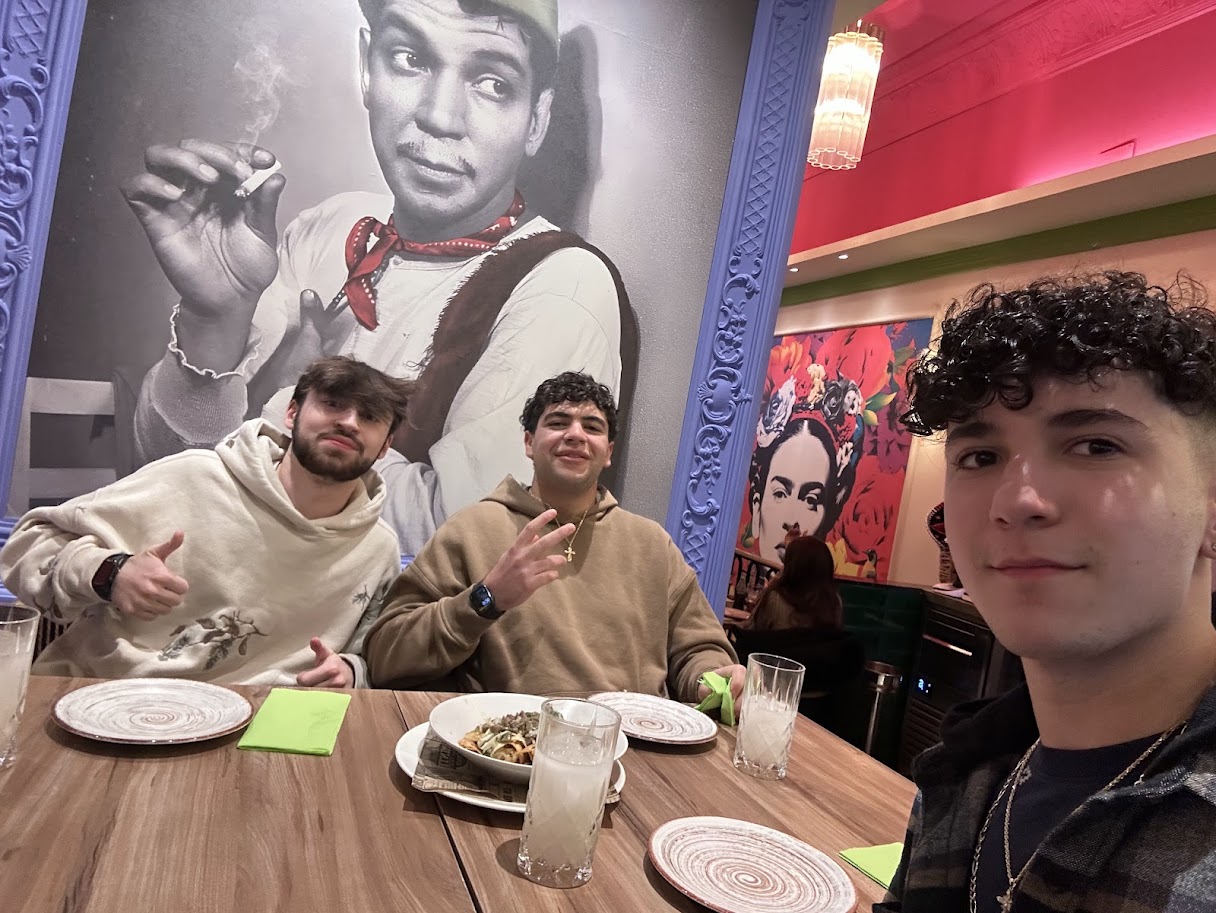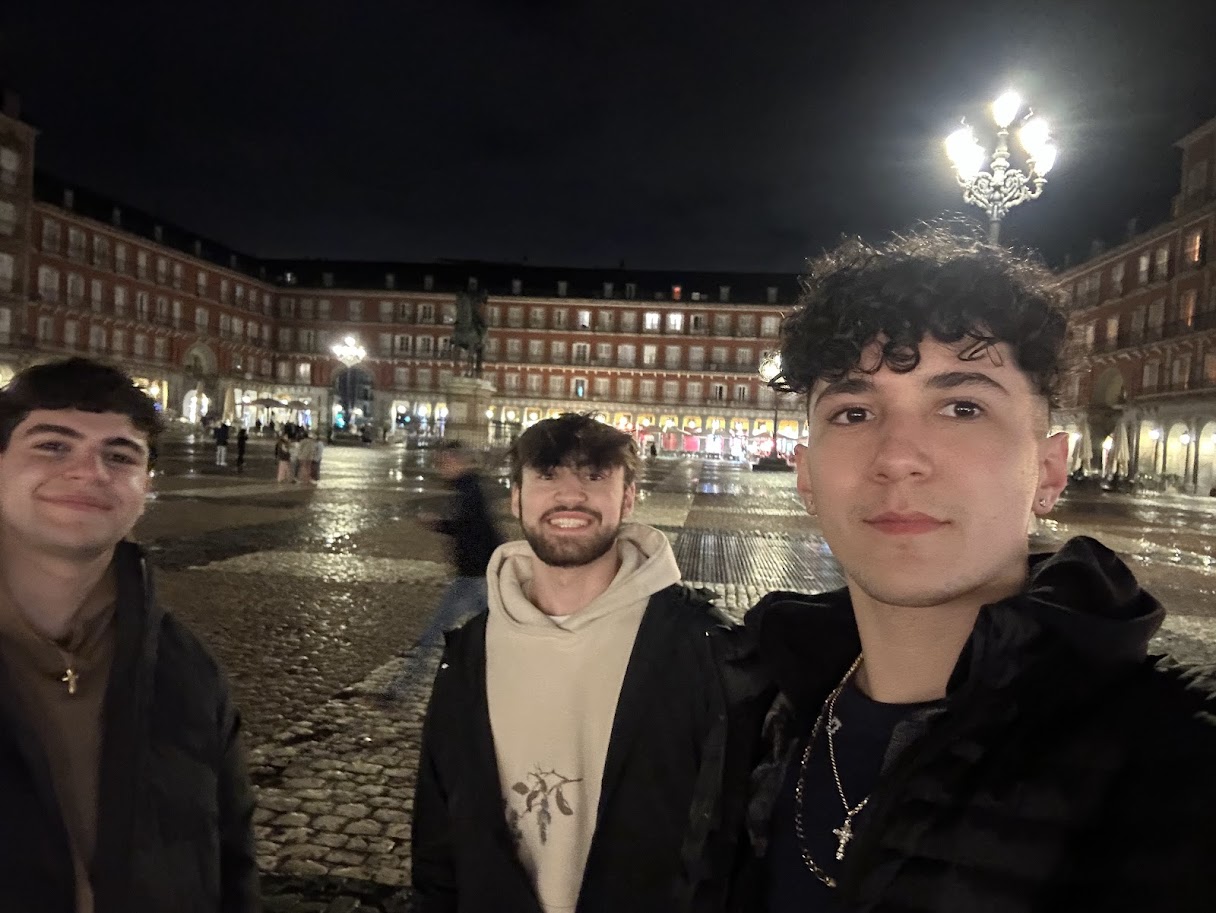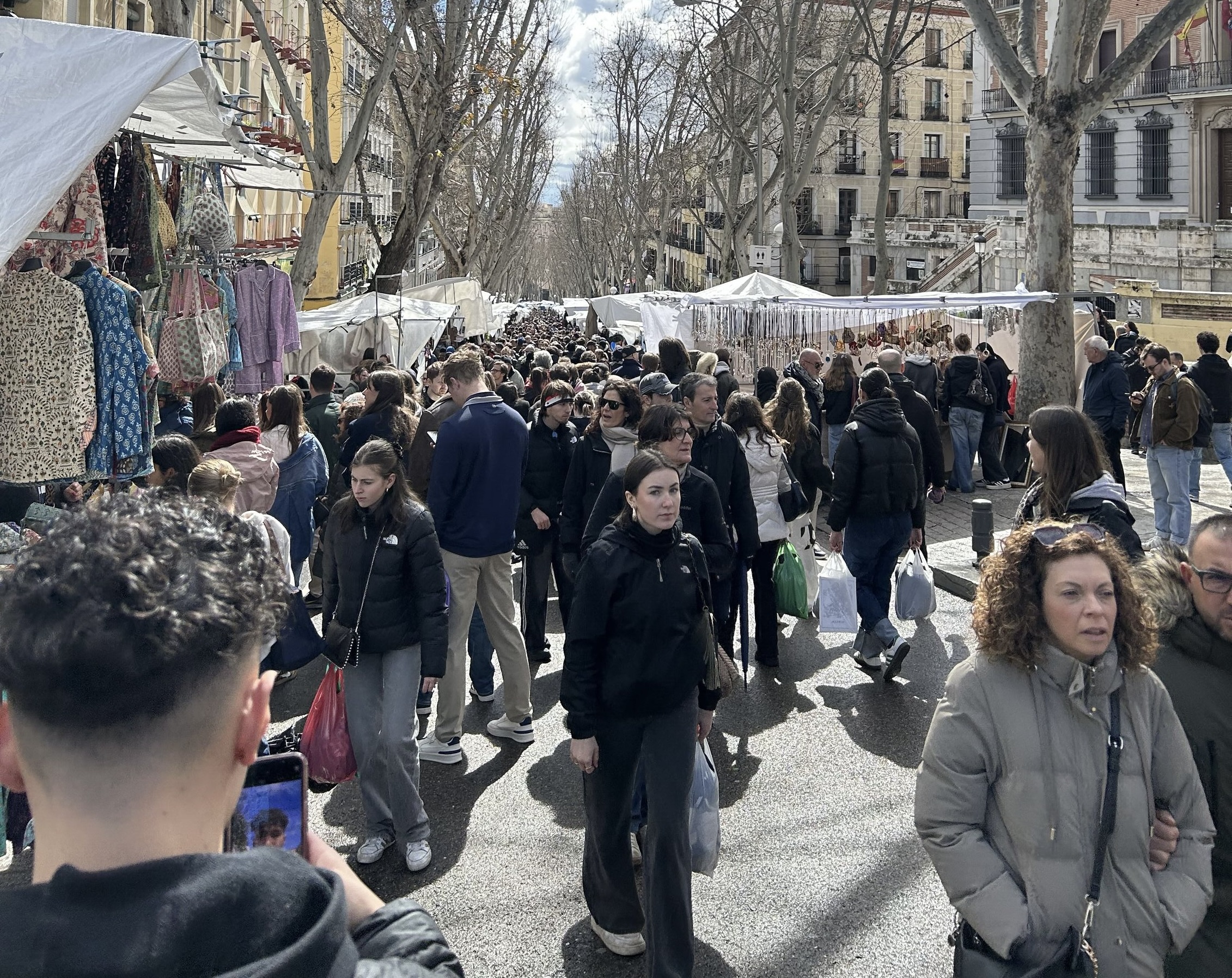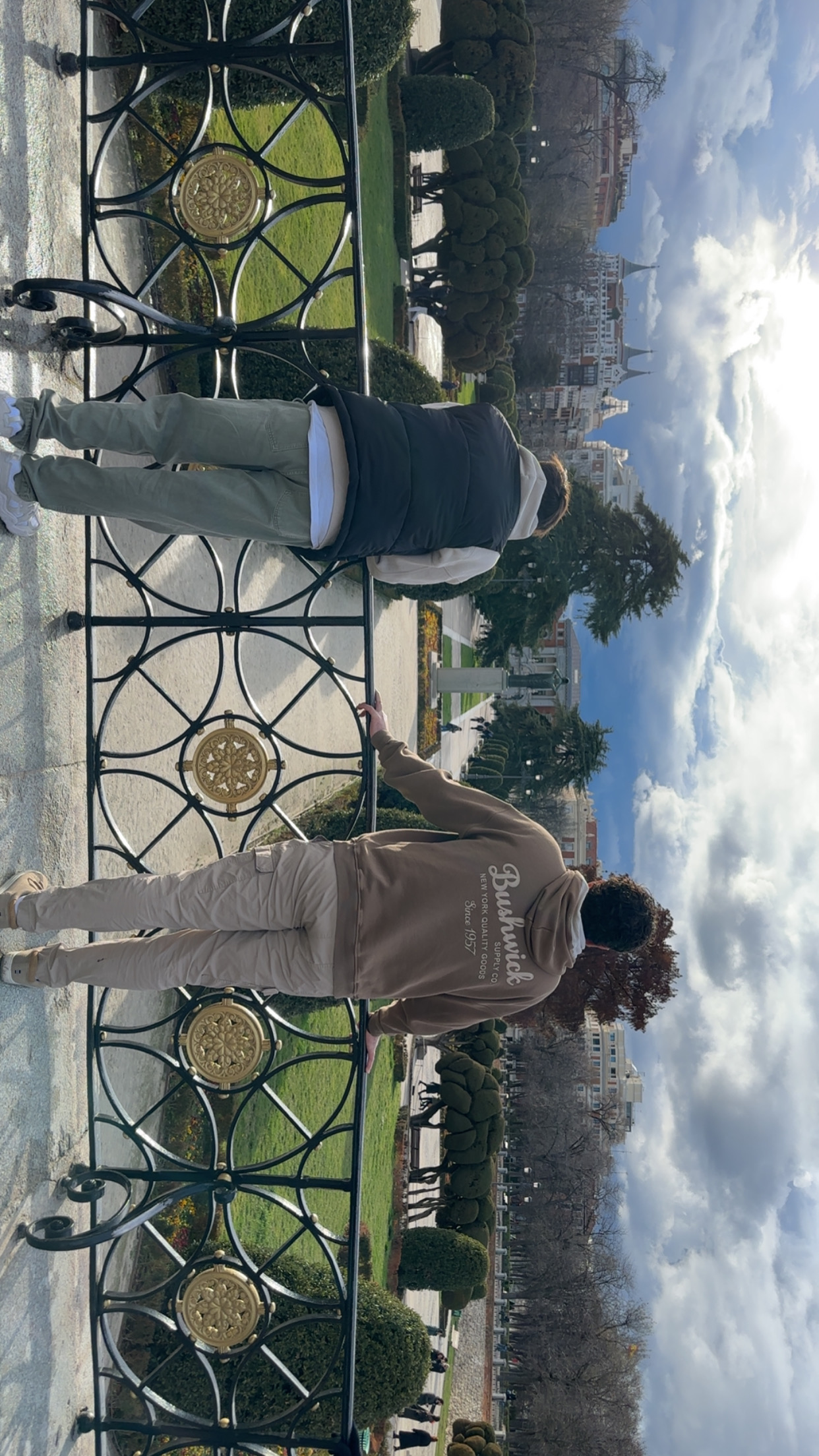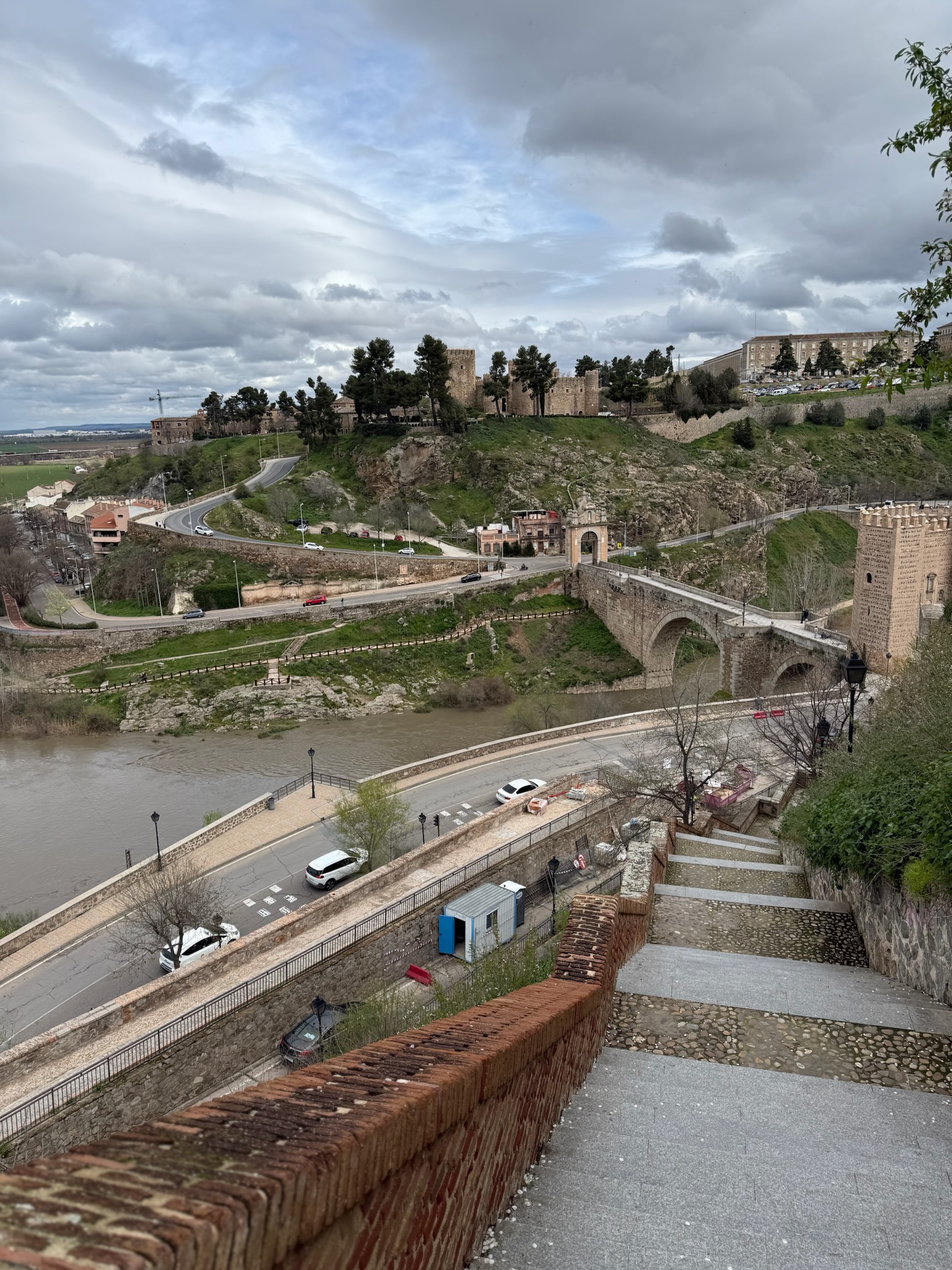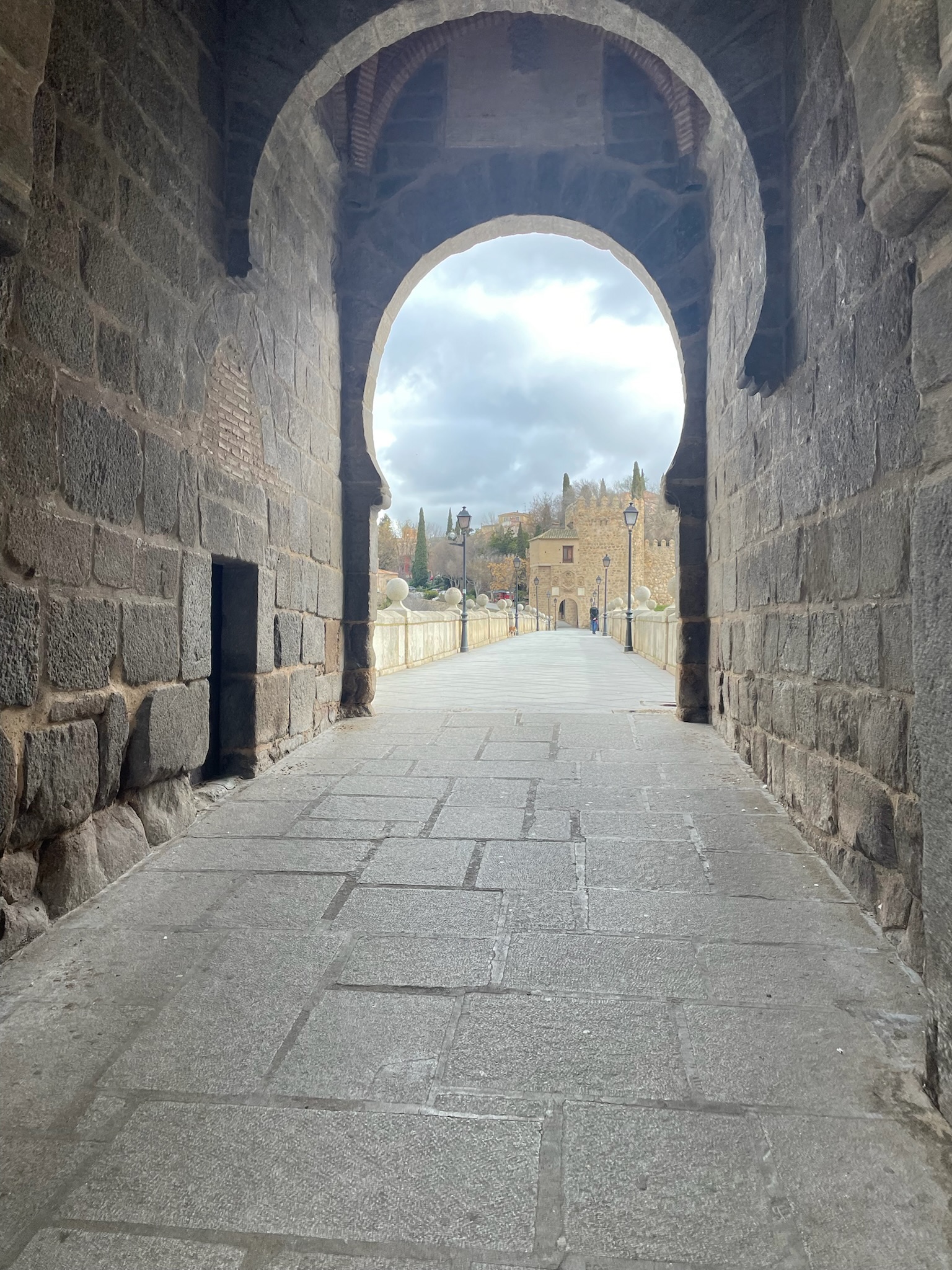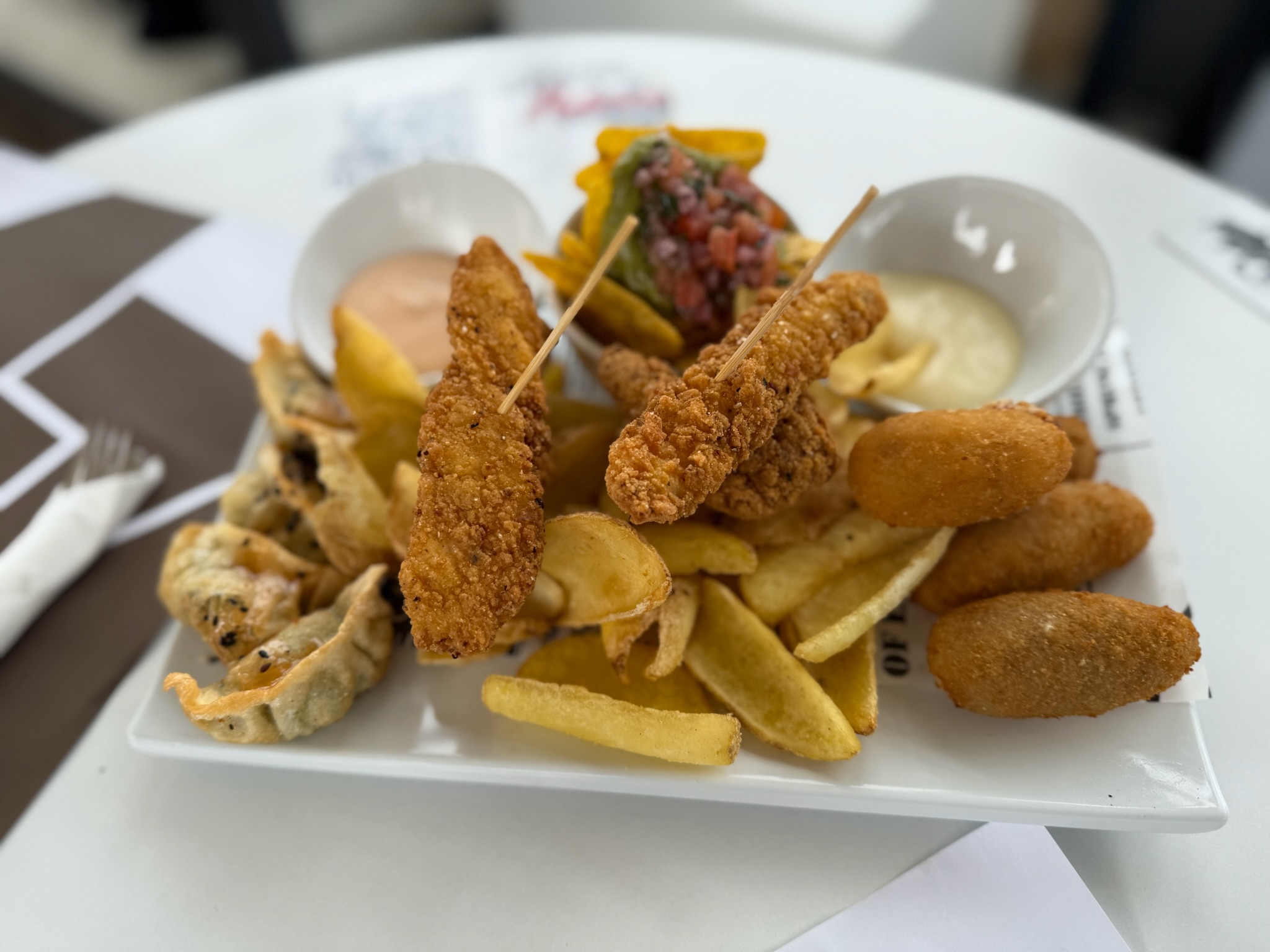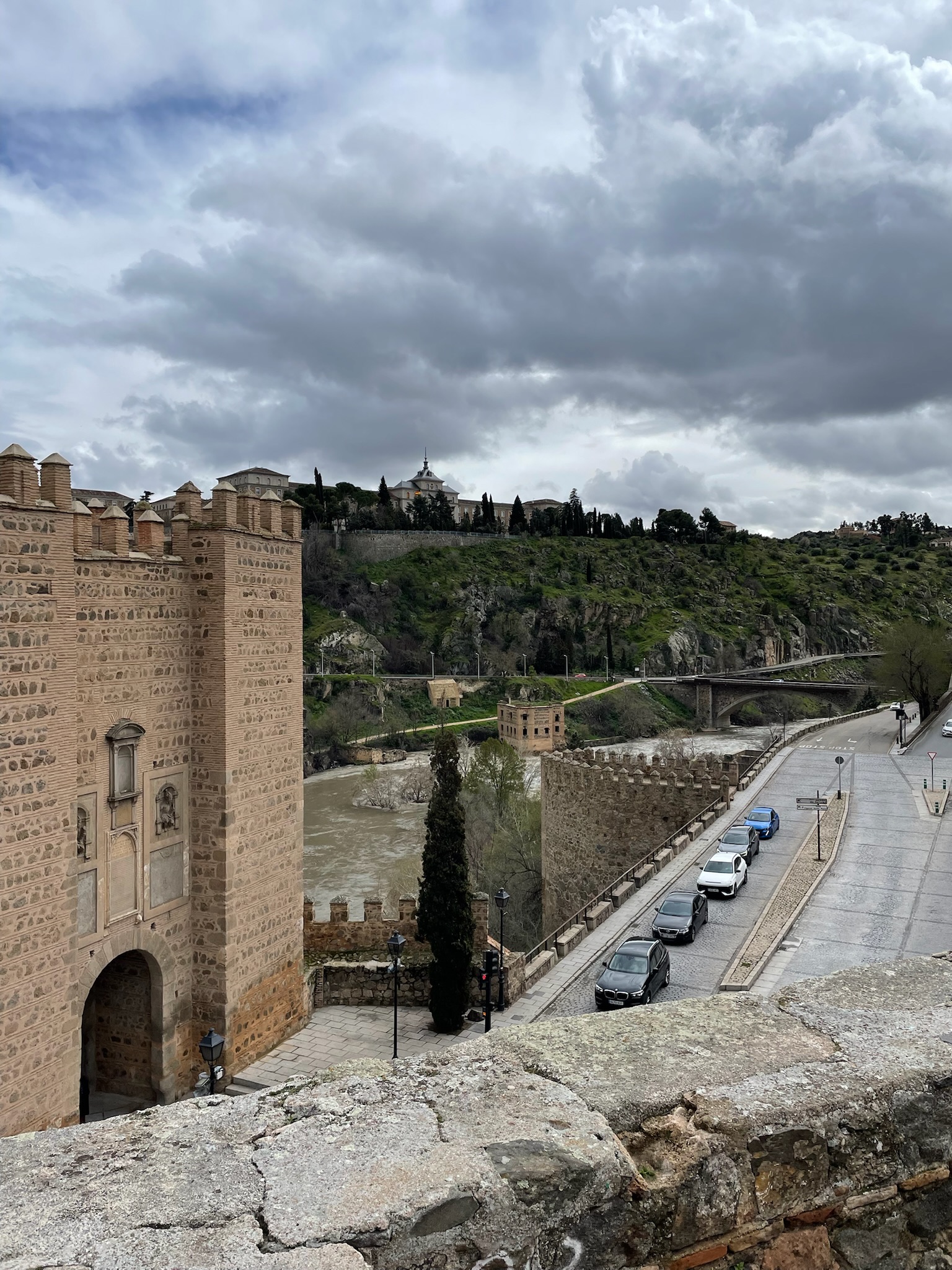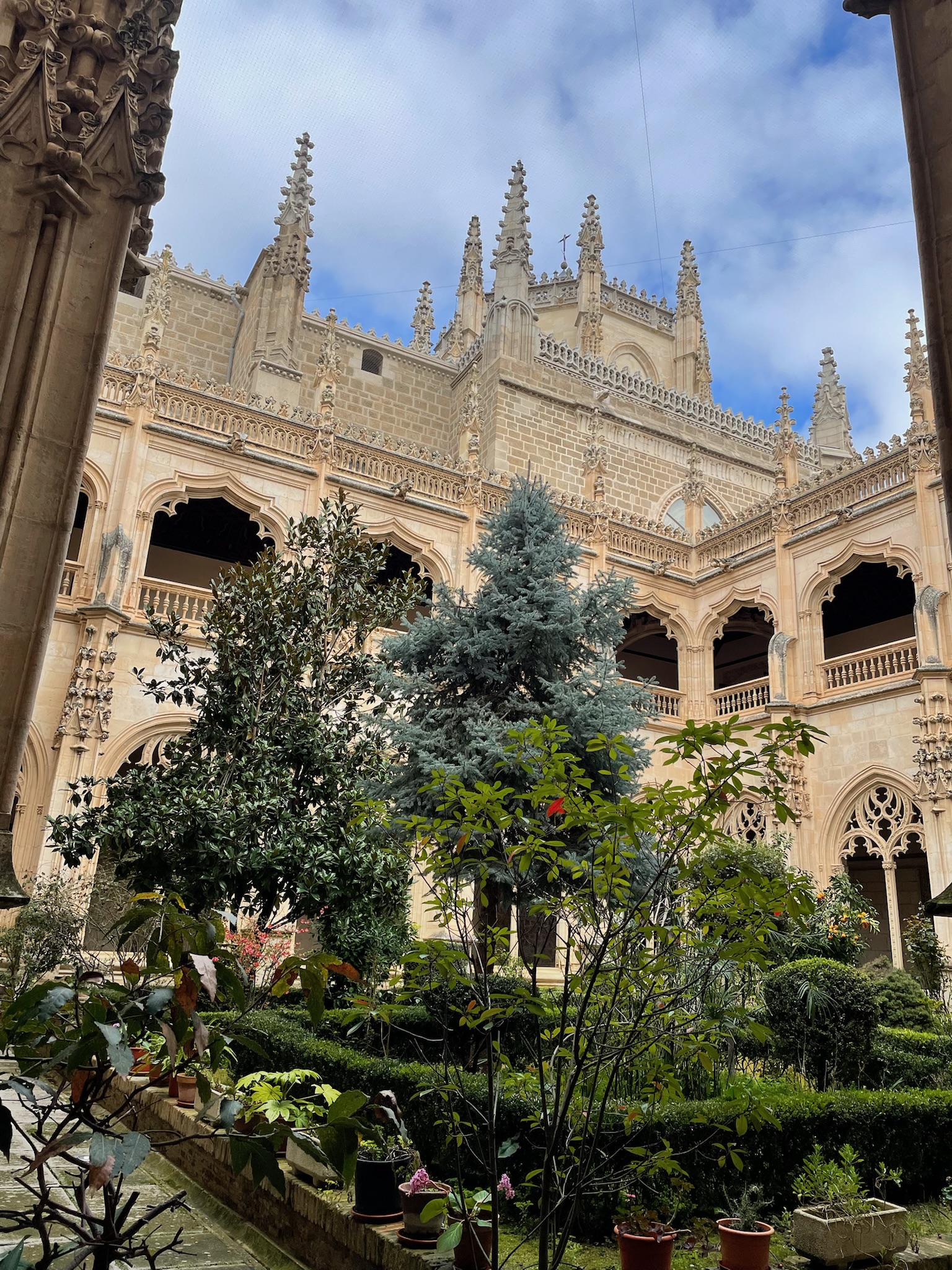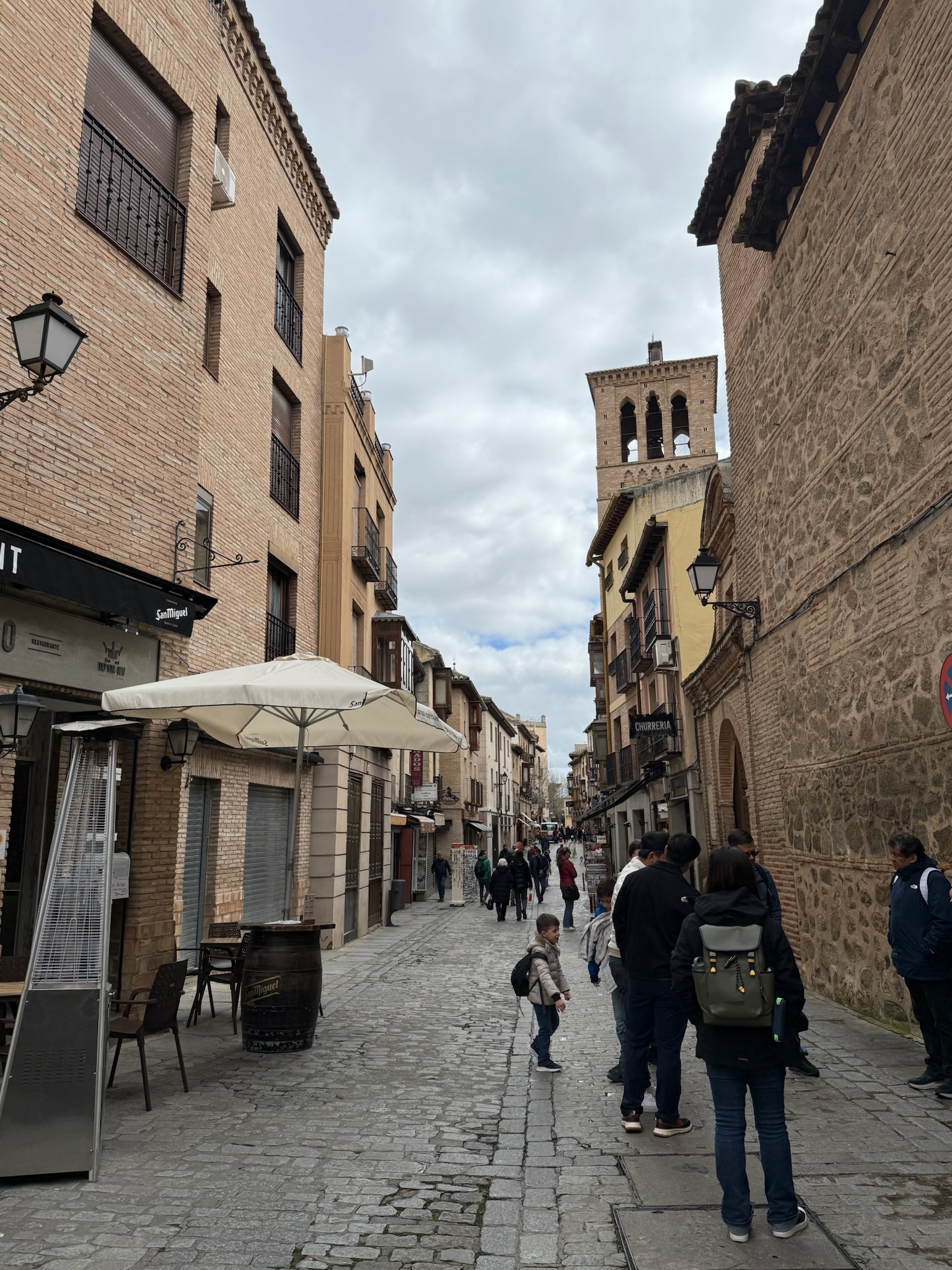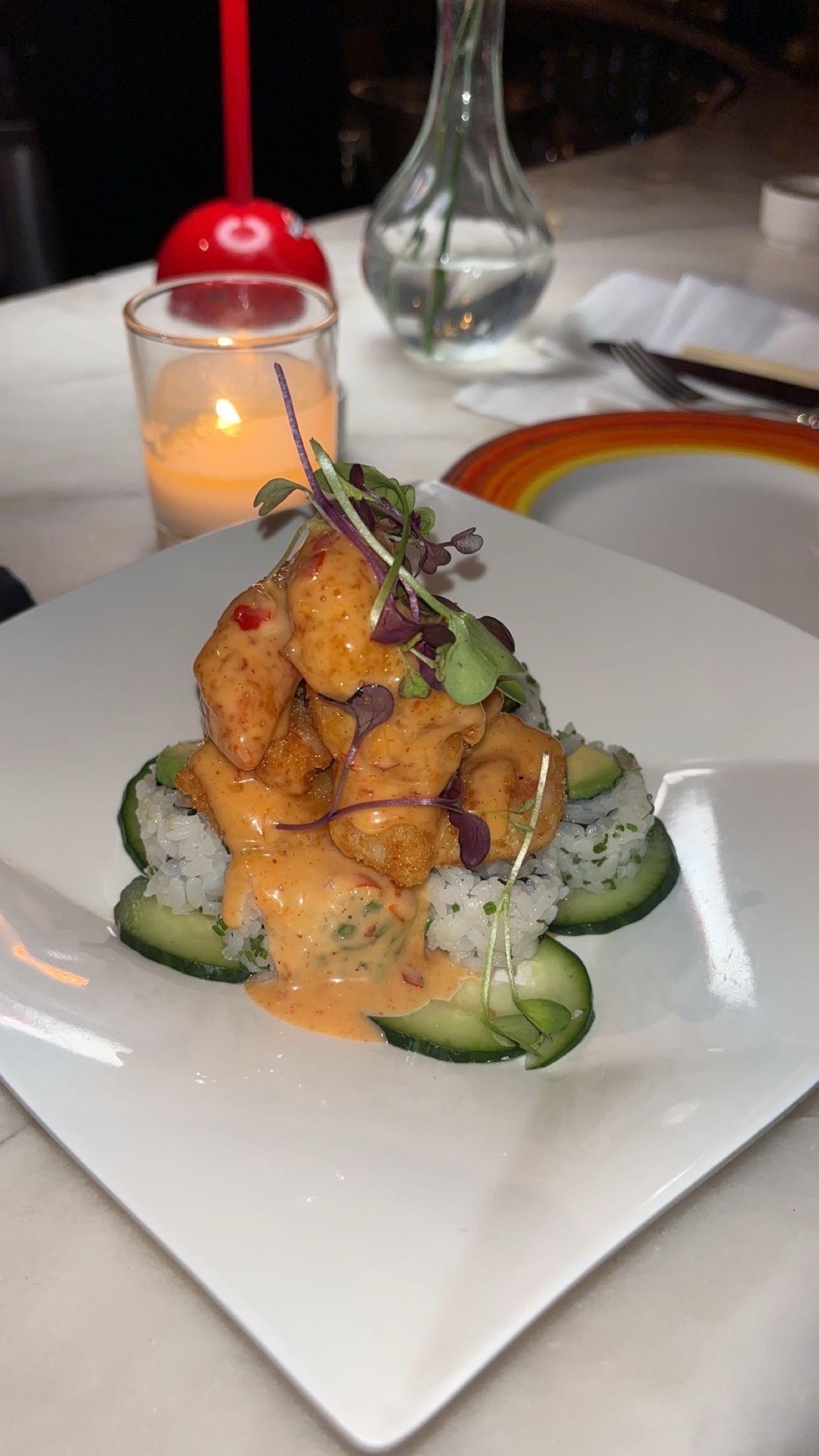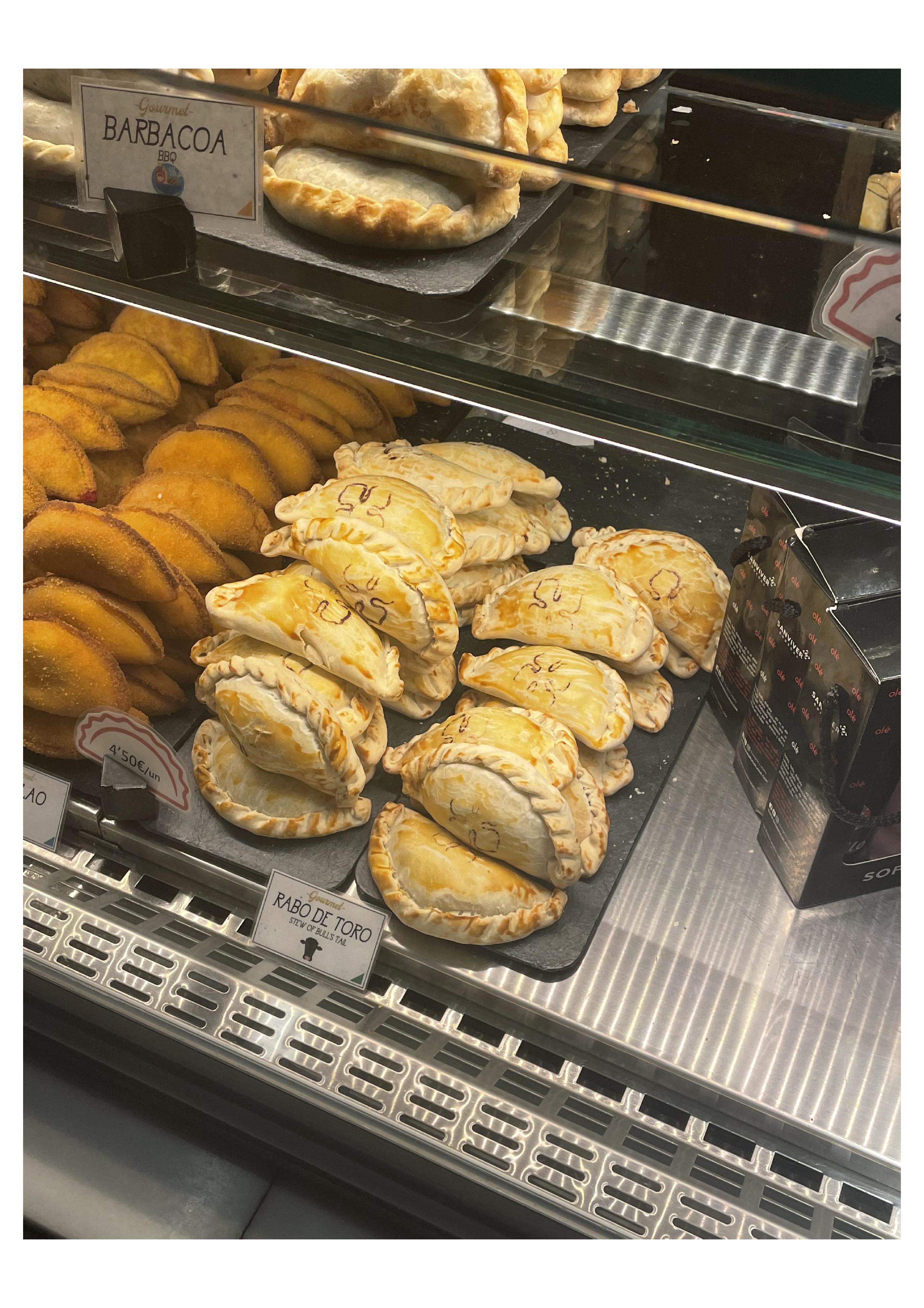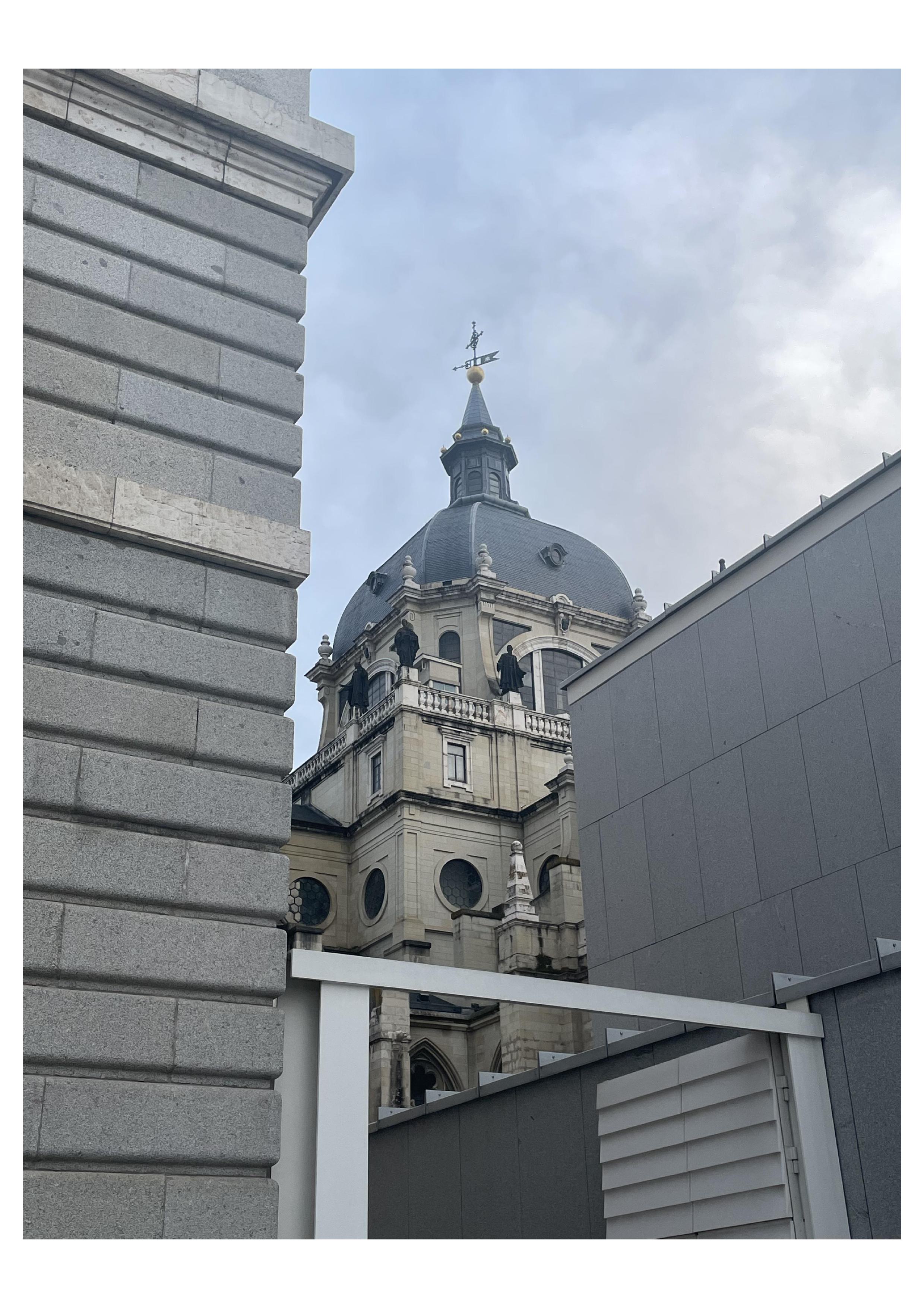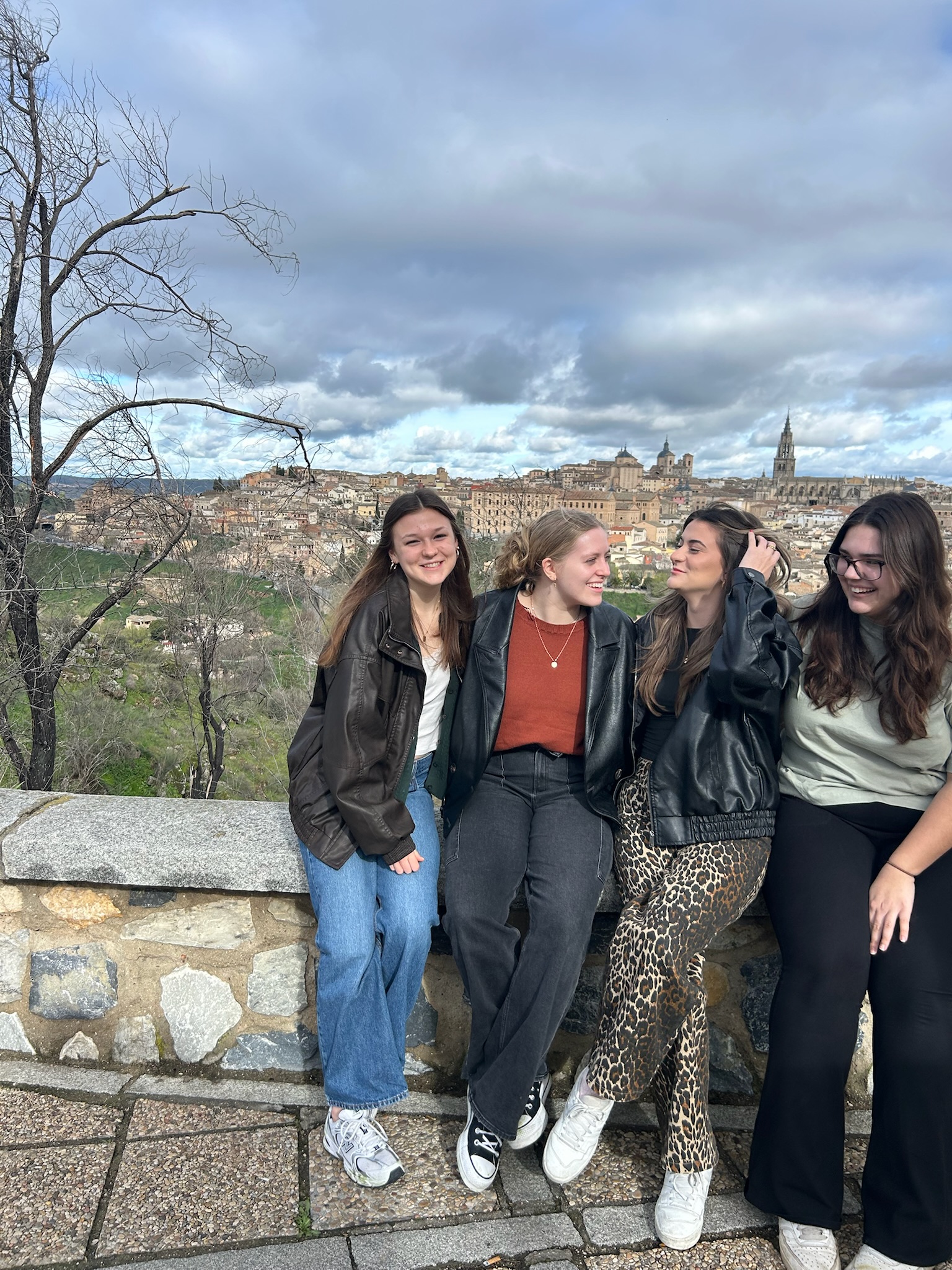On March 8th, I finally arrived at the Madrid-Barajas Airport in Madrid, Spain. I was so excited when I realized I was finally in Madrid after waiting months for the trip. I was with 3 other students from the study abroad program during this flight, which I was very grateful for, considering we were together throughout the whole flight helping each other get to Madrid. As we continued to be together, we shared our excitement about what we would do there and built a bond from the conversation. In the airport, as we were checking in, the process went really fast and was organized. We got through everything quickly, and then we arrived at the main entrance to meet Fran, our guide for the study abroad. I was relieved because we arrived safely in Spain, and now it was time to start our journey in Madrid.
We all arrived on the bus, and Fran started telling us the plan for the first day, which included settling in, exploring the city, and orientation. It was a very rainy day, which I expected considering we arrived in Spain during a week when it was planned to rain a lot. When we finally got to the hotel called “ Hotel Regina,” I was amazed by the beautiful architecture of the building around us. The front desk staff was very kind and respectful. As we waited for our keycard to be ready, I was able to meet my study abroad group, and we decided to go eat at this restaurant called “Honest Greens,” and I ended up getting a breakfast burrito. This was a perfect time for everyone to get to know each other, which was really nice. However, I couldn’t stay long because a few of us needed to head back to get our MetroCards, and I was one of them. After the group met up, we walked to the metro station, where we had to get our picture and give them information, and once that was completed, I officially got my MetroCard. Once we finished, our keycards were ready, and I headed to my hotel room. And when I entered, I was overjoyed and thrilled at how beautiful the room was. After resting, we all had to attend orientation, and Fran gave us an insight into what the week was going to look like and what’s expected of us. When orientation ended, I headed back to my hotel and later went on my first outing with friends to this restaurant called “Le Club Sushita.” This was our first dinner, and we found this place unexpectedly as we were exploring the city, which made it more fun. It was overall an elegant and luxurious restaurant. The layout was incredibly different from the usual restaurants I attended. One of the dishes I decided to order was this ramen bowl. I really enjoyed it because it’s a favorite order of mine, and I usually get this dish in America, but in Spain, it had a different, unique flavor of combinations. Furthermore, we enjoyed the night, ending off with prawns and a dessert. It was an amazing place to start off with.
One of the buildings that I enjoyed admiring while we were exploring the city at night was called “Cibeles Fountain.” This building was so classic and stunning, glancing at it at night. The purple colors lit up, which made it more noticeable to admire from afar. I ended up doing my research on the influence behind the fountain, and I found that it was an 18th-century neoclassical fountain that depicted goddess Cybele on a chariot pulled by 2 lions. It is such a beautiful piece of art to look at, and it was not just this building that caught my attention, but overall, all of the buildings in Madrid were beautifully built out and had pieces of classical art. I noticed that Spanish monuments reflect the diverse history of blending Roman and Christian architectural styles. Spain’s monuments are beautiful because it has much creative mastery and depth of history with artistic monuments. In addition to being aesthetically beautiful, Spain’s rich culture has made me admire the country even more than before. As I continued to learn more about the culture, I began to grow more admiration and appreciation for how hard they worked to make these beautiful monuments. My favorite part of Spain was definitely experiencing the artwork and architecture. They are so unique and different from monuments and art in America.
“Cibeles Fountain.”






